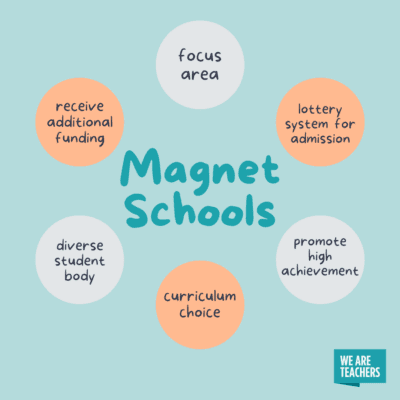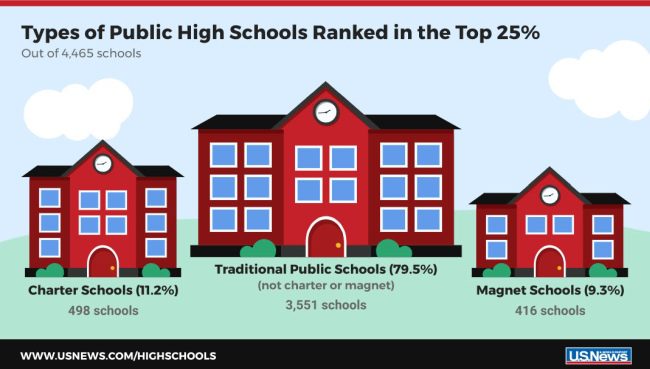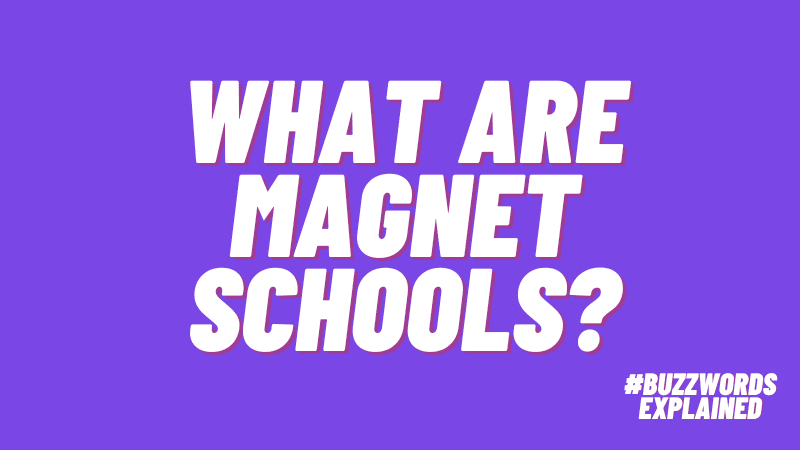If you’re old enough, you might have grown up fascinated by the public high school featured in the movie and TV show Fame. This real NYC performing arts school seemed like a dream come true for many who watched, a place to pursue their passions while also getting the required high school education. That was out of reach for most at the time, but magnet schools like these have become ever more popular in recent decades. So what is a magnet school, and what should parents and teachers know about them?
What is a magnet school?

Magnet schools are part of the public school system, but they offer a specific focus on subjects like STEM or the performing arts. They first started in the 1960s as an alternative to the private schools that families were typically unable to afford. Many focused on diversity in their student body, and they helped bring educational choice to underserved populations.
Today, there are more than 4,000 free public magnet schools in the United States, mostly in urban or suburban areas. They’re part of their local school districts, but they’re open to any student in that district regardless of where they live.
There are different types of magnet schools. Some offer alternative schedules, like year-round school. Others might have unique configurations, like K-8 or school-within-a-school. The most common types have curriculum focus areas, which include (but are not limited to):
- STEM: Science, technology, engineering, and mathematics
- Performing arts and fine arts
- Career and technical education (CTE)
- International studies and world languages
As part of the public school system, magnet schools receive public funding. Some states provide special funding for these schools, and grant money is available too. These schools are administered by the same local school board as traditional public schools, and must comply with all state education regulations.
Magnet Schools vs. Traditional Public Schools

Source: The Pillars of Magnet Schools, Diggs-Latham Elementary School
While traditional public schools focus on providing a general education to every student, magnet schools offer a more specialized environment. They give students a chance to pursue their interests and help them prepare for the careers they want. Magnet schools frequently achieve better test scores on state assessments, and they boast more parental involvement and higher rates of attendance and graduation.
Magnet schools are an option for all students, but since they are so popular, they’re often only able to accept 10 to 20 percent of students who apply. Most magnet schools use a lottery system; others accept students on a first-come, first-served basis or have a rigorous application process.
Teachers at these schools must meet all state certification requirements. But they also have a chance to focus on sharing their own passions with their students. They may be paid slightly more than traditional school teachers on average, but this varies widely from district to district.
What do critics say about magnet schools?
As with any educational system, magnet schools have their critics. Some point out that they now often promote the very inequities they were designed to eliminate. While they may have a more diverse student population, they usually don’t have the same socioeconomic status (SES) mix. Magnet school students tend to come from higher-income, two-parent families. Their parents are more likely to be employed and hold higher-education degrees. That said, studies indicate that students with low SES that attend magnet schools do better academically than their traditional school counterparts.
Other critics worry that by drawing the best and brightest students away from traditional public schools, those schools will suffer in consequence. They worry that magnet schools with rigorous application processes may be missing out on the chance to serve students who really need them. Magnet schools usually have fewer ESL students, and those with a focus on grades may reject low-achieving applicants who could be better motivated in a different environment.
Magnet School Pros and Cons

Source: U.S. News & World Report
Wondering whether a magnet school is right for your child? Considering teaching in one? Here are some of the pros and cons to help you decide. (Learn more here.)
Pros
- Increased chance of student body diversity.
- The ability to focus on subjects students are passionate about.
- General commitment to academic excellence and achievement.
- Stronger family and community partnerships.
- Better student attendance and graduation rates.
Cons
- Commute time may be longer, depending on school location.
- Application process can be challenging or left up to luck.
- Separation from neighborhood friends, new friends may live farther away.
These pros and cons vary from school to school, so do your research into local options to learn what you need to know.
Magnet School Information Resources
There’s a lot to know about these unique public schools. Visit the following sites for more detailed information.
- Magnet Schools of America
- Public School Review: What Is a Magnet School?
- School Choice Week: Ultimate Guide to Public Magnet Schools
- U.S. News & World Report: Magnet High School Rankings
Do you have questions about teaching in a magnet school or want to share your own experiences? Join the WeAreTeachers HELPLINE group on Facebook for discussions and advice.
Plus, What Are Charter Schools? A General Overview for Teachers and Parents.


